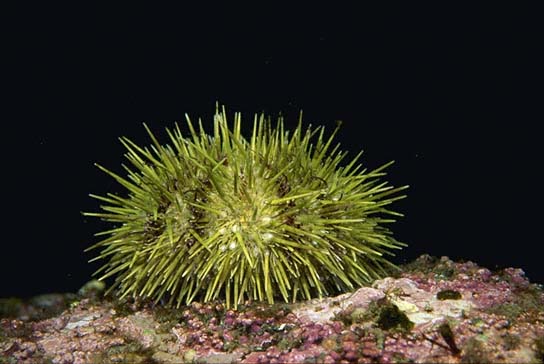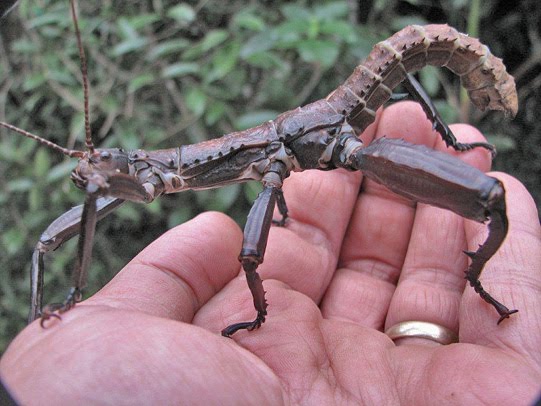
Talk to me, Sing to me
Dear Pink-Hued Customers,
Our mission and passion in life is to bring superlative products from our island-studded home to market. We love everything we sell, from Rhode Island squid to Fiji Albacore, to Japanese Tobikko, we love it all. But there is something special about the products that come from this little corner of the world. On land we find that the persistent salt-spray and great day-to-night temperature swings build subtle, piquant flavors in vegetables and meats. By sea we find that the combination of big, clean, moving waters and sweet, protected bays yields finfish, Echinoidea (Urchins) and shellfish that have an unmatch-able combination of flavor profiles, clean and sharp from the big waters, and deep and rich from the abundant food. We are always meditating on what more we can do and bring to you.
Remembrance of things deep and dark
Years back harvest divers were kings of the North-End. Insatiable Japanese demand coupled with huge standing stocks of Urchin and Sea Cucumbers mobilized hordes of neoprene-clad divers. Over every inch of seafloor crawled the treasure hunters. Long ignored or neglected species came to surface for the first time, including thirteen varieties of sea scallop. Most are too scarce to support a commercial fishery, or not especially toothsome. Pink and Spiny scallops, however, are both plentiful--actually they are common as dandelions at certain depths--stock estimates are in the tens of millions of pounds--and delicious. Deep-Venturing divers found pulsating carpets of Pinks and Spinys clinging to ledges and rocky bottoms in high-tidal flow areas. Harvesting them is enchanting, but hazardous. During maximum-flow times, the scallops attach themselves to rocks and one another with byssal threads--the same fibers that constitute Mussel beards. Once the tide slackens, scallops sever their attachments and flutter around like little butterflies, always moving forward as they flap their shells. At the depths they cluster, divers have only minutes to gather product safely. Commencing a commercial fishery in those go-go years was an easy task, and soon Singing Scallops were featured on restaurant menus region-wide. They are truly extraordinary--combining the sweetness of scallops with the depth and richness of clams. A 1987 NYT article neatly sums up the story and appeal of our most abundant natural scallop; http://www.nytimes.com/1987/05/10/travel/fare-of-the-country-tiny-pink-scallops-from-puget-sound.html?pagewanted=all
Deep Water Blues--PSP issues, short shelflife, creeping bureaucracy.
Scallops, like other shellfish, mainly eat phytoplankton. At the depths they call home, most plankton is cystic, or dormant cells that have drifted down to the seafloor to await favorable environmental conditions for re-emergence. Pinks and Spinys have the ability to "clap" their shells to stir up sediment from the sea floor and feed on the resulting suspended slurry. Among the many species of phytoplankton with a cystic stage is Alexandrium, the toxin-producing algae that creates red tide. At scallop depths regular monitoring is impossible and with scallops constantly stirring up sediments, PSP levels in scallops can spike anytime, any season. After a series of disastrous product recalls, WA Department of Health eventually required PSP testing of every single batch of scallops harvested. This was a great idea, but swiftly caused another string of problems. Pinks have a very short shelf-life out of water. At most three days. For a diver to send a sample off for sampling cost at least 24 hours, and more likely 36 hours of a 72 hour shelf-life. Hot scallops needed to be dumped, which, given the heroic efforts needed to harvest them, is a bitter pill for harvesters. Divers began holding pinks in barrels and crab traps in marinas and home bays to await test results, but scallops, like other shellfish are filter feeders, and DOH takes a dim view of holding any shellfish in proximity to concentrations of boats and developed areas. By the late 90s the fishery had wound itself down to pretty much nothing. For the next ten years the fishery remained technically open, but no-one harvested. Meanwhile, FDA guidelines, under which DOH operates, stiffened up to the point that open-water harvest of any shellfish became illegal.
Department of Fisheries Revival
Six years ago we bumped into Sara Dickerman at the Willows Inn. At one point Sara asked, "what happened to the pink scallops? They were my favorite thing when I first came to Seattle. Can anyone bring them back?"
Thus began an odyssey through bureaucratic never-land. Rekindling a dormant fishery ought to be easy, thought we. As shellfish growers we deal weekly with DOH. DOH is hands down the best State or Federal agency we work with. Our concept was to bring all harvested scallops home to Shoal Bay to hold in our certified, tested waters until PSP tests come back clean. So doing mean no risk of poisoning anyone, no need to dump hot scallops--we can just hold them until the toxin clears--the scallops are happy in our tanks and the freshness clock doesn't start running until we pull them out of the water--generally an hour or so before the ferry leaves. But open-water harvest, meaning harvest in areas not continuously monitored, is now illegal, acoording to the FDA. Never mind that big water in the San Juans is some of the cleanest water in the world, never mind that surface water samples tell nothing about what is happening 90 feet down, the law is the law. Furthermore, even certifying the scallop harvest areas is troublesome. It takes five years, and DOH is geared to working with shellfish growers, Department of Natural Resources and the Tribes, all of whom have title to the tidelands and bedlands in question. When we tried to submit harvest site certification requests, no dice, because we don't own and can't lease the bedlands. Finally DOH superstars Bob Woolrich and Scott Berbells came up with an elaborate end-run involving tissue sampling, endless mapping and classification work and mandatory transplant/relay periods for the scallops.
Then we slammed into Washington Department of Fish and Wildlife. What seemed to us simple--reviving a well-trod commercial fishery--turned into a six-year slog through the wilderness. We tried working with the Tulalips, Lummis and the State. At different times we thought we were close, four times we began gearing up and four times something popped up to dash our dreams. We never forgot, but moved onto other projects. Meanwhile, a few short miles away, unbeknownst to us, Joe Stephens, another would-be scalloper was fighting the same good fight.
Last November, during dealings over our cultivation of European Flat Oysters, Rich Childers, Puget Sound Shellfish Manager decided Pinks were a cause whose time had come, and things started to happen. And today we are overjoyed to announce that the Pink/Spiny Scallop fishery will re-commence in a limited area on Jan 26!!!!!!! Thank you Rich!!

Rich Childer, bureaucracy Buster. I speak for the Scallops
Scallops Forward!!!!, Bespoke Hooch
These next weeks we are entering uncharted waters with harvest, relay and paperwork challenges. Chris Sparks, our long-time Urchin diver and Joe Stephens will be heading up harvest efforts. We will focus on relaying, testing and distributing these deep sea treasures. Please bear with us as we work through the layers of logistical, biological and regulatory issues to bring you the FIRST PINK SCALLOPS SOLD IN ALMOST 20 YEARS!!! Look for a schedule of scallop Coming Out events, call Paisley to schedule your own!!!
Also, to accompany the scallops, Owen Roe Winery has custom-crafted a signature Pink Scallop Rose, a blend of the Grosso clone of Sangiovese from the famed Red Willow Vineyard and Cabernet Sauvignon from Own Roe's own Outlook Vineyard. Owen Roe co-owners Ben and Julie Wolff have been our strongest and most steadfast supporters and friends these past few years. They have ridden the roller-coaster of heartbreak and triumph with us through our house fire, business dramas and more. Now we get to partner with them for the Pink Release. This wine will only be available for special scallop events.
Look for first-sale announcements!!!
Scallops will be a limited-supply, high demand product. Ordering restrictions will apply.
Urchins Yet Again
Last weeks' announcement of the ending of the Green Urchin season was highly exaggerated. A few thousands of pounds still remain on the quota and the urchins have not yet spawned. Please enjoy another week of greens and perhaps another week after this. We'll keep you posted.

Still Swingin'-2-U.
Blizzard-Bound Eastern Fishes
Eastern Fishes will return as soon as their weather dies down. Right now everyone is battened down and the airport is not accepting fresh-freight consignments until things settle down. Forecasts call for reasonable weather early next week. Stand by for news of your favorite squid, monk, flounder and eels.
We do have 10# tubs of cleaned squid.
Fresh Fish, Local and Beyond
It is still January, but we have a few solid fresh options for the week ahead.
Steelhead remains plentiful and reasonably priced, Cali Hali is our over-sized flounder of choice, we are getting consistent fresh True Cod from Kodiak. For those who can commit to and handle regular deliveries of 25# cases of true, we are offering substantial discounts--Call Paisley--. We will have a limited volume of farmed sturgeon bullets for Weds and potentially a dab of from Alaska Troll Kings. And for you editorially minded customers, grouper is known as groper when hailing from New Zealand. So thanks, but it is spelled correctly. And think how your customers will respond to Groper on the board.
Frozen Favorites
Don't forget Warner Lew's specialty Togiak Herring, Medium Spot Prawns and Baker River Sockeye. Finish out January with a bang, not a whimper! Go frozen!!
| Fresh Meats Fresh Lopez Lamb in wholes, halves and cuts is available until further notice. Fresh Pastured Lopez Pork will be available the first week of Feb. Fresh Skagit Grass-fed beef from the Mainland Cattle Co will be available the second week of February. Call Sara or Paisley for meats info. |
Lord Howe Island, some 400 miles East of Australia, has some of the most unique fauna on earth.
19th century settlers on Lord Howe Island were welcomed by a unique giant insect, the Tree Lobster.
 |
| Can't see the rats from the air |

Welcome ashore, white man. Want to go fishing?
These flightless, speedy insects were everywhere on Lord Howe. They eat leaves and decaying vegetation and mate for life, with females being more active and males accustomed to following their mates' lead in feeding and ambling. Daytimes, the male sleeps snuggled around the female. In the absence of males, female Tree Lobsters may reproduce by parthenogenesis, meaning that unfertilized eggs may mature and hatch on their own. Lord Howe locals came to consider the the chunky critters as an island mascot, and used them as fish bait. Apparently fishes are passionate about Tree Lobsters. For decades there were plenty of Tree Lobsters for everyone. This idyllic state of affairs came to halt in 1918, when the supply ship, the SS Makambo went aground on Lord Howe and a legion of black rats escaped onto the island and began munching their way through local wildlife, especially these charismatic stick insects . By 1920 the Tree Lobster was declared extinct, another victim of invasive species and the the Island Biology trap.
Decades later climbers venturing up nearby Balls Pyramid Island came upon a dessicated Tree Lobster skeleton. Further parties found a few more skeletons, but no live insects. In 2001, Australian scientists David Priddel and Nicholas Carlile and two assistants travelled to the Balls Pyramid to search for the elusive bug. They scoured the barren island and found only some large insect droppings under a single Melaleuca shrub growing in a crevice 330 ft above the shoreline.
That night they returned to the bush on the theory that the insects might be more active at night. Snuggled under and around the bush they found a community of 24 adult Lobsters.
Two years later a team returned to the island and captured two mating pairs. One pair failed to reproduce, but the other, transported to the Melbourne Zoo has multiplied admirably. Twelve years on the Zoo has successfully spawned over 13000 bugs. Some have now been re-introduced to a rat-free corner of Lord Howe Island and others have been dispatched to other zoos for breeding and display.

One island, one shrub, 24 lobsters.
Tree Lobsters; JFF salutes you! Never give Up!!!
Your JFF Crew

No comments:
Post a Comment